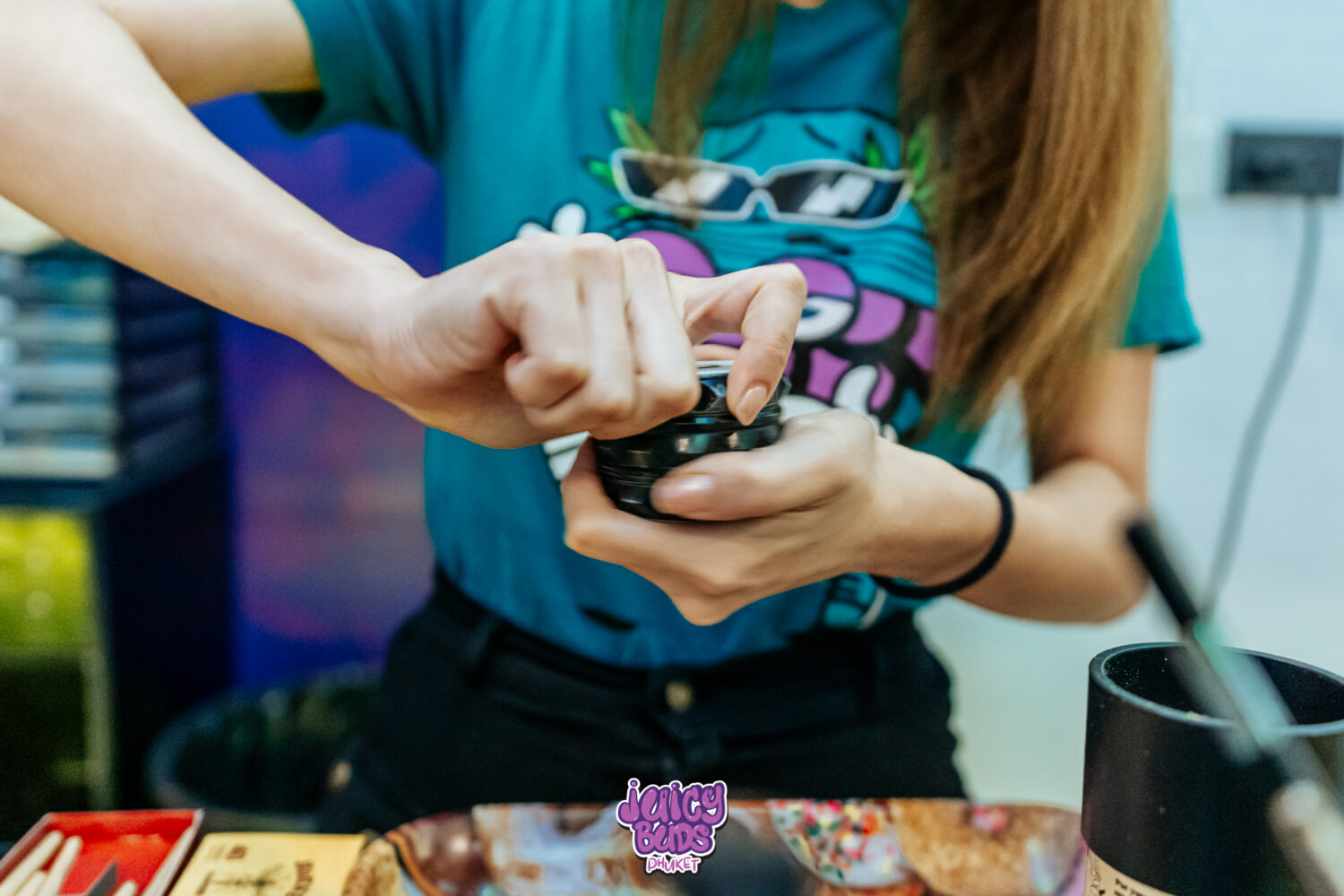What Is Ghee? How To Make Bud Butter?
Bud butter is the perfect ingredient for the edibles you are looking to bake. While standard butter (salted or unsalted) can be used, many find that using ghee gives it a better taste with health benefits to boot. If you are prepared to pay the high price it sells for you can buy ghee at health food shops, stores, or online. A far better alternative for many is to make their own.

Blunts and Flavored Papers
Back in the 1980s, when you wanted to smoke weed, it was always via joints, bongs, or other homemade water-based smoking devices, pipes, and contraptions. There weren’t many brands of rolling papers at the time, and there were no blunts or flavored papers whatsoever. We managed to get by, but in the rapidly changing commercial cannabis market of today, the choice of blunts and flavored papers is simply astounding.

Once that straightforward process has been completed, your decarbed cannabis can be added to produce some delicious bud butter. From there, you can use it to make whatever edible you wish.
Below, we will look at:
- What ghee is?
- How to make it.
- A brief on how to decarb your cannabis and why that process is necessary.
- A basic bud recipe that can be used to create a tasty edible high.
What is Ghee and What is to Love About it?
Ghee is clarified butter, meaning it is butter that has been simmered and then strained to remove all water. As will be seen, this process is achieved by cooking butter over low heat until the milk solids begin to lightly brown. This then creates a slightly nutty caramelized flavor that is just made for cooking.
It is easy to see why so many love ghee. First off, it is shelf-stable and can be stored for extended periods without the need for refrigeration. Then comes the fact that it has a high smoke point because the clarifying process has removed the water content. The smoke point of butter is 350 Deg F, compared to ghee which is around 465 Deg F. A higher smoke point makes for more effective cooking.
The clarifying process is also suitable for anyone who is dairy-sensitive because it removes casein and lactose. Another health benefit comes from the fact that ghee is high in Omega-3s and butyric acid. The latter is a short-chain fatty acid that is understood to be good for your gastrointestinal tract.
Many will already be aware that for centuries Ayurveda practitioners have used ghee for medicinal purposes. It is lauded for such things as its anti-inflammatory, digestive, and therapeutic properties.
How to Make Ghee at Home
While it is possible to create ghee by melting the butter in a microwave, we believe the traditional method is far more rewarding and satisfying. With that in mind, begin by simmering a block of butter in a saucepan. This simmering should continue until the milk solids sink. From there, continue cooking it over very low heat until it turns golden brown.
In terms of time and weight, a pound of butter needs anything up to 45 minutes (bigger batches will take even longer). Because butter contains around 20% water this means that by removing the water through the simmering process you will receive an 80% ghee yield.
To put that another way, 1 tablespoon of butter is lost for every 5 tablespoons of ghee. This is why making large quantities of ghee can be pricey but for most, the taste and benefits far outweigh the extra cost involved. And, as mentioned, making your own ghee is far cheaper than buying the jarred versions for sale.
From there, skim off the rising foam (this should be carried out as often as necessary) and then strain the remaining liquid through cheesecloth or another type of fine mesh strainer until only the brown solid remains. You now have ghee!
Why you Need to Decarb Your Cannabis
The next step in making your bud butter is to take some decarbed cannabis in readiness to infuse it with the ghee. The reason you must decarb cannabis is that it is this process that converts the plant’s THCA into THC, thus activating the plant’s psychoactive power in your edibles.
Heat is required to decarb cannabis and this occurs each time you put a flame to a joint or heat up cannabis in a bong. The result is that the THCA turns into THC which you inhale to get stoned. However, for bud butter, the decarb process is carried out by heating cannabis at a low temperature in your oven before adding it to the ghee.
If you skip the decarb process and simply add the cannabis to the ghee this will have little or none of the cannabis effects you are looking for.
How to Decarb Cannabis
Many detailed articles are available on the decarboxylation (decarb) process and what it all means but the basic premise is to heat your oven to 230 Deg F., take a baking sheet or glass oven dish, and place parchment paper or aluminum foil in it. From there, spread loosely broken-up cannabis buds onto it.
Note: A cannabis (or other) grinder can be used to break down the cannabis for greater consistency but it is not essential to use one.)
Place the tray on the middle shelf of the oven and heat for 35-40 minutes until the cannabis is golden brown. During this baking time gently mix the buds every 10 minutes to expose all sides of the buds.
Once the baking is complete, remove the buds and allow them to cool at room temperature. Then break or grind up the decarb cannabis a little further as this will be infused into the ghee during the cooking process.
Just remember not to grind the cannabis into too fine a powder because anything that can go through the strainer at the end of the cooking process will go into the finished bud butter.
A Basic Bud Butter Recipe
When making bud butter it is recommended to go for a 1:1 ratio of cannabis to ghee. Those looking for milder effects should use less cannabis.
Ingredients
- 1 cup of ghee.
- 1 cup of water.
- 1 cup of ground decarb cannabis (10-12 grams).
Place the ghee in a saucepan and melt it over low heat. You may wish to use a stock pot, double-boiler, or slow cooker. Add the cup of water – This helps to regulate the temperature and prevent the ghee from scorching. Once the butter is fully melted add in the decarbed cannabis and stir to combine.
Keeping the temperature between 175-190 Deg F., simmer on this low heat for 3 to 4 hours stirring occasionally. Make sure the temperature does not exceed 200 Deg F otherwise the cannabinoids may burn out. You should also make sure that the mixture never comes to a full boil.
Take the mixture off the heat and let it cool then place a cheesecloth or mesh strainer over a jar. Pour the ghee/cannabis mixture through it. You should not try squeezing every bit of the mixture out as this can add chlorophyll to your bud butter and could add an unwanted plant taste.
Put the jar of bud butter in the fridge and let it solidify before using. Try leaving this to refrigerate overnight. If not, leave it for at least a few hours in the refrigerator. If you find that excess water has formed at the bottom of the jar simply remove the solid bud butter with a knife and drain out the water.
Your bud butter is now ready to use for making highly delicious edibles.
Cook With Caution!
Due to several variables, it is difficult to know just how potent your bud butter will be. Such factors as how potent the cannabis is, how long you heat it during the infusion process, and at what temperature.
Because there is no exact science to the above this makes it hard to know how strong your final mixture is without trying a small amount.
The easy way to do that is to spread either a 1/2 (or a 1/4) teaspoon on a favorite snack, eat that, and give it an hour to see how it affects you. From there you can then increase or decrease the dose according to your needs.
For example, if making cookies, each cookie should contain one equal dose of your chosen strength bud butter.
Hopefully, the above has given you an insight into what ghee is and how to make bud butter. For more insightful articles on the cannabis world, please click here.
Happy Cannabis Cooking!
